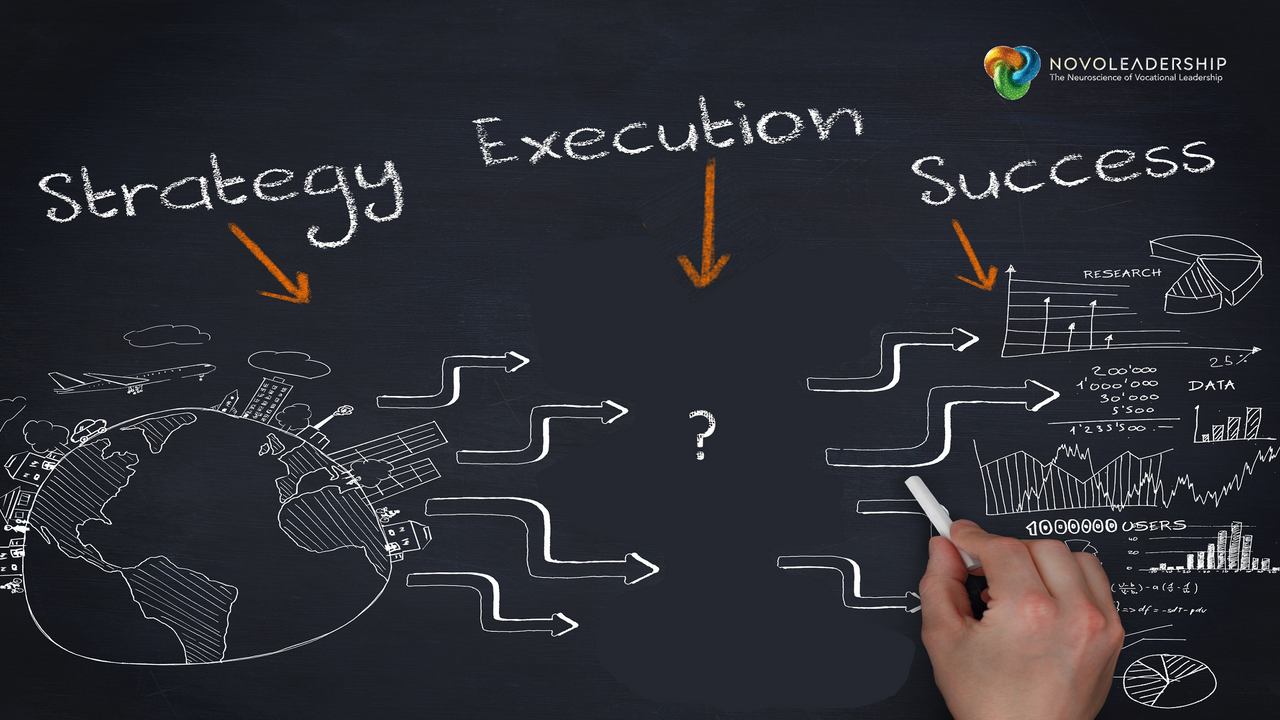
Closing The Gap Between Strategy & Execution
According to a well-documented Harvard Business Review business leaders have an intuitive grasp of the fact that obstacles to long-term success often arise from a lack of consistent interaction and collaboration among team members in strategic -planning.
Paradoxically, despite this understanding, their improvement efforts tend to focus on driving execution of the strategic plan; especially the tangible processes, structures, and authority rather than the critical human and cultural aspects that are pivotal for successful implementation. This tendency is primarily driven by the ease of validating actions and results related to these tangible elements through quantifiable performance metrics.
The irony is that most of us have experienced what happens when strategy execution starts with imposed change… People resist it, collective motivation may slump, and negative gossip might start to flow about why the company needs change in the first place.
The paradox here is that the fear of encountering resistance often compels business leaders to prioritise tangible factors over the human dimension. Engaging in open conversations and involving employees in the strategy creation process may be seen as risky, as leaders worry that resistance will emerge.
However, numerous studies suggest the opposite is true. Psychologically, imposed change tends to breed resistance, whereas authentic two-way interactions and quality conversations provide a fertile ground for collaborative change.
In one study published in Harvard Business Review, by Alison Reynolds, Ashridge Business School and David Lewis, London Business School, concluded that 76% of execution fails because people fail to work together to make change happen.
Regrettably, the prevailing consensus among directors and executives is that focusing on the human element lacks predictability. Yet, what executives and directors truly desire is participative and collaborative execution, often referred to as employee engagement.
Newsflash… Employee engagement is not working because generally it starts with strategic thinking /planning that flows top down through one-way directive communication focusing on the tangible to avoid losing control.
It must start with energising people where you change attitudes and mindsets through genuine engagement from two-way interaction, and most significantly where the strategic thinking / planning element, is at least in part, shaped by the people who need to execute it.
Fact: When you involve your people in the thinking / planning process you will get their buy-in to the execution of strategy.
You must establish an environment that nurtures authentic two-way interaction, marked by curiosity, the free expression of ideas, and collaborative planning. Never underestimate the significance and value of exploring open-ended questions with your team as opposed to imposing a rigid strategy plan that cannot be critically challenged.
Stay connected with us
for knowledge sharing updates!
Join our mail list to receive the latest Business & Leadership research, advancements & updates from our team and neuroscience community.
Don't worry, your details are safe, we will never share or sell your information, for any reason. You can unsubscribe at any time.

